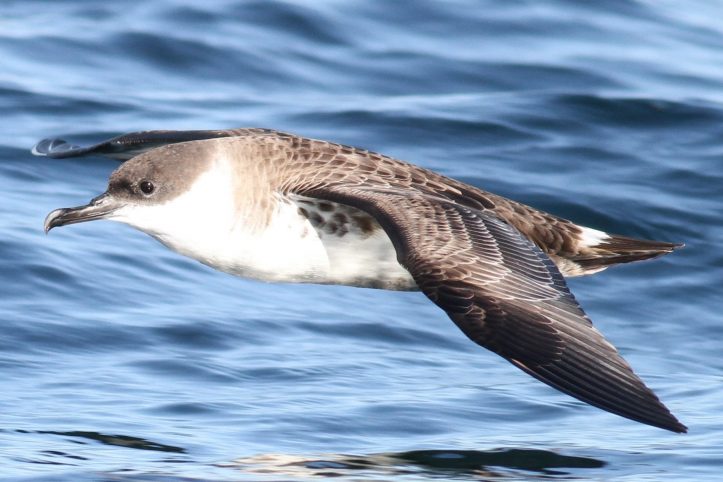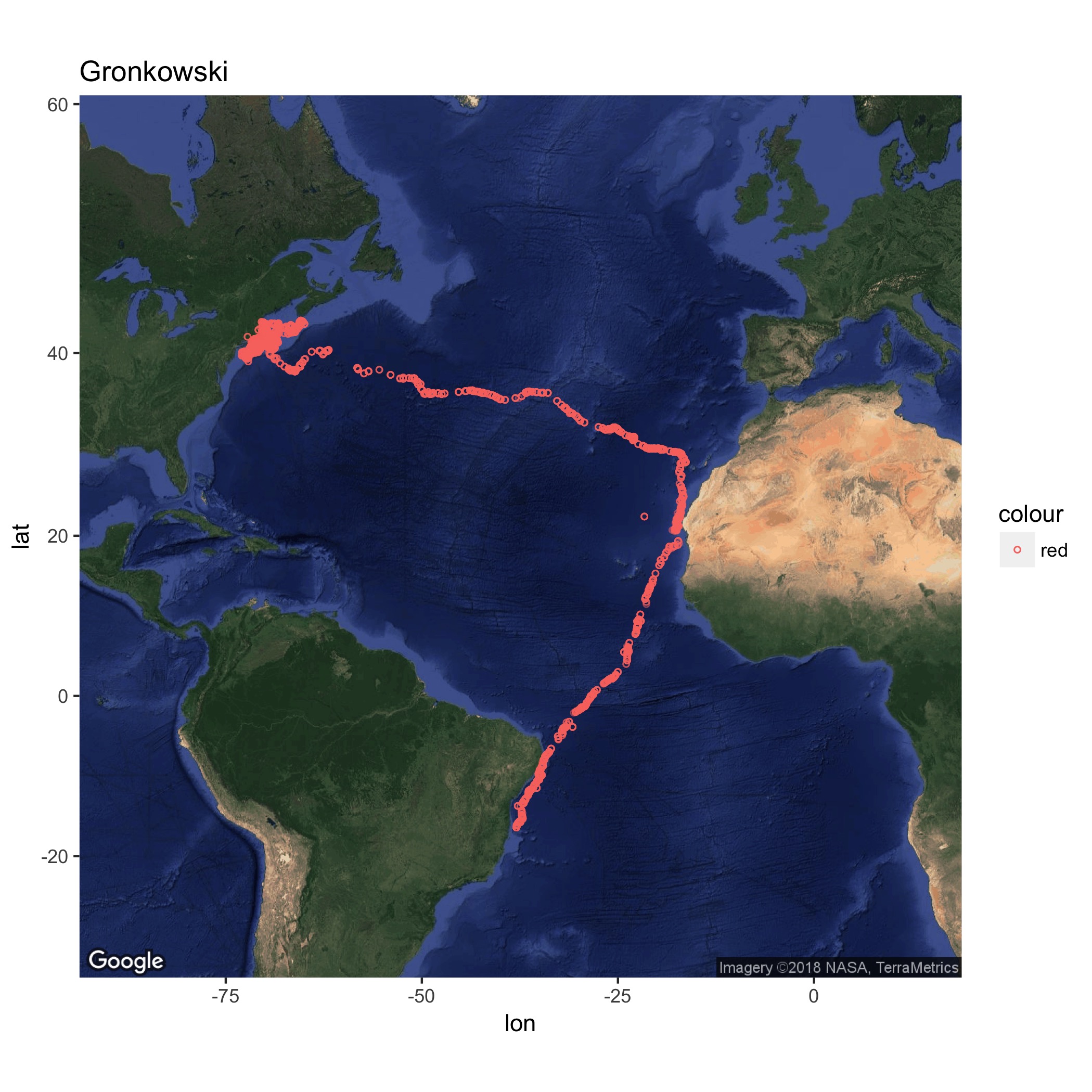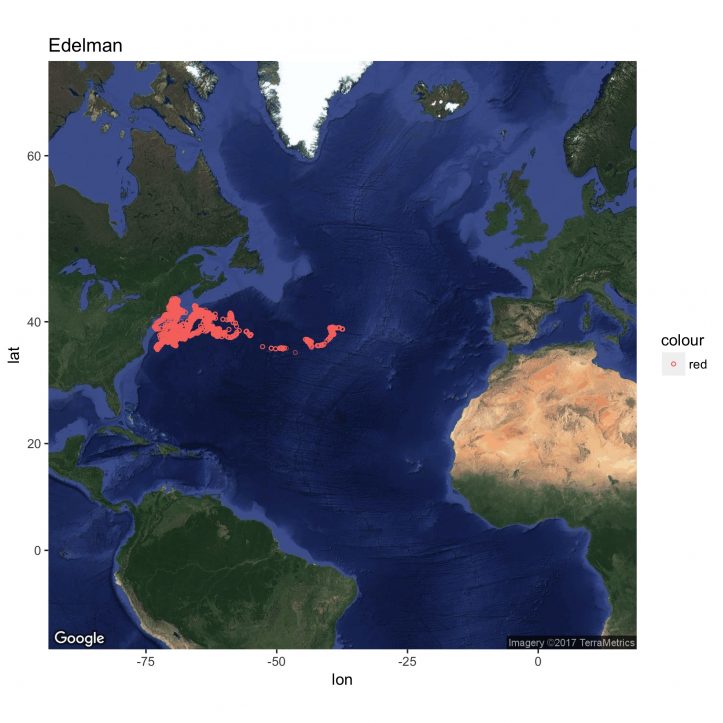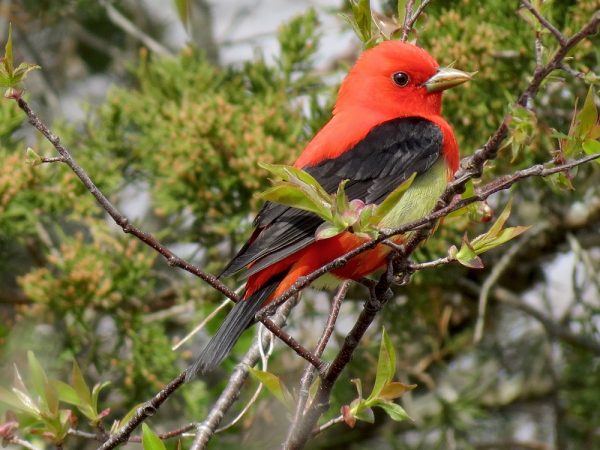While New England football fans are anxiously following the fortune of the New England Patriots, ornithologists at the Stellwagen Bank National Marine Sanctuary are tracking the trans-equatorial movements of Great Shearwaters (individuals in this year’s group are named after Patriots players).
Through the use of sophisticated satellite technology, tiny transmitters now have the capacity to follow the movements of birds and secretive mammals more than a hemisphere away practically in real time.

Great Shearwater ©Peter Flood
Followers of Distraction Displays may recall that in late summer seabirds called Great Shearwaters made headlines when exceptional numbers were observed feeding on many thousands of Menhaden (small forage fish) in the surf-line at Provincetown on the tip of Cape Cod. Although most of these shearwaters have long since retreated toward their nesting grounds on the remote archipelago of Tristan du Cunha deep in the South Atlantic Ocean, scientists nonetheless now know precisely where some individuals are located!

A size comparison of one of the solar PTT transmitters used in the project and a standard U.S. penny. ©NOAA/SBNMS
While satellite tracking has been used to monitor wildlife for 20 years or more, the weight and size of transmitters today makes it possible to follow wildlife significantly smaller than eagles and bears. This summer, waterproof transmitters called PTT (Platform Transmitting Terminal) tags weighing only 12 g and manufactured by Microwave Technology were affixed to shearwaters off Cape Cod during the month of August.
Of nine tags originally affixed to Great Shearwaters and one to a Sooty Shearwater this summer, one is still generating round-the-clock signals from Argos satellites orbiting the earth at approximately 528 miles above the ground. The unique signals generated by the transmitters are regularly received by Argos and eventually made accessible to the researchers who are mapping the movements of the shearwaters. Needless to say the technology involved is complex, but the information gathered is elegant.

All 10 tagged shearwaters as of 1/4/2018. ©NOAA/SBNMS
The 10 shearwaters tagged this summer were all named after New England Patriots players. Of the 10 tagged shearwaters, only Gronkowski’s transmitter was still sending signals on January 2, 2018. Gronkowski crossed the equator on December 19, and as of Jan. 2 was at 16.5 degrees South in deep water (>2000 meters) off the coast of Brazil near Banco Minerva—a semount <100 meters deep. Go Gronk!

Gronkowski as of 1/2/2018 ©NOAA/SBNMS
Cooks crossed the equator on December 12, but its transmitter stopped working on Christmas Eve at 27 degrees South in deep water (>2500 meters) off of Paraguay.

Cooks 12/24/2017 ©NOAA/SBNMS
McCourty’s tag stopped working on December 19, hours after crossing the equator. Edelman was still in the mid-Atlantic on Dec 12, and unfortunately Brady’s Sooty Shearwater transmitter cut out while the bird was off Morocco in mid-October.

Edelman 12/12/17 ©NOAA/SBNMS
All of the tagged shearwaters were aged by plumage to be either one or two years-old, and most will not likely return to Tristan du Cunha this winter because few are likely to attain breeding age until they are at least 5-6 years-old. These sub-adult individuals will very likely remain on the Patagonian Shelf until March/April before beginning their northward migration, which will initially bring them up the east coast of South America before reaching North Atlantic waters and the Gulf of Maine.
Having the ability to track individual Great Shearwaters in this way affords ornithologists not only a fine way to chart how this highly pelagic seabird uses the entire Atlantic Ocean in the course of a year, but also a way to map prime foraging and other concentration areas while they are in Gulf of Maine as well as elsewhere in the Atlantic Ocean. This information ultimately enhances the ability to identify oceanic regions of highest conservation concern. Read more about this fascinating project >



